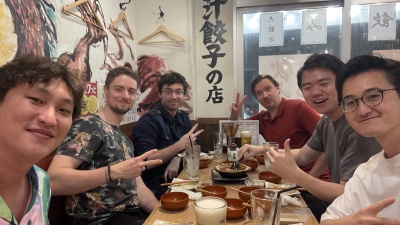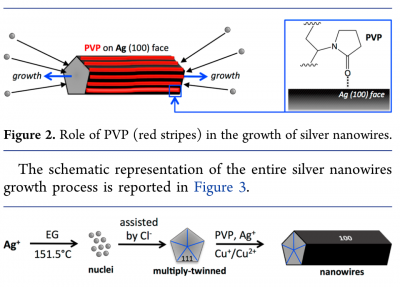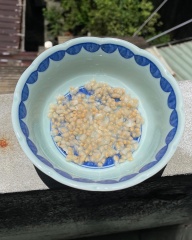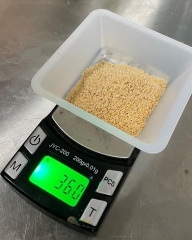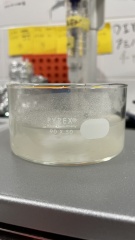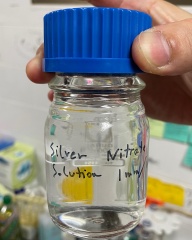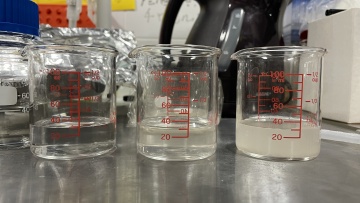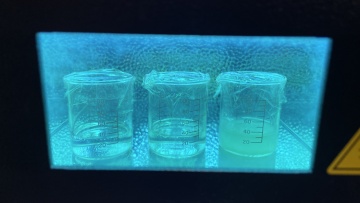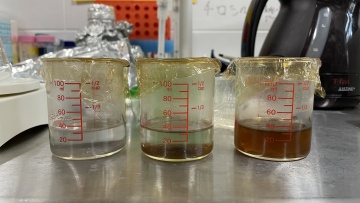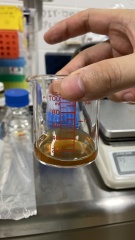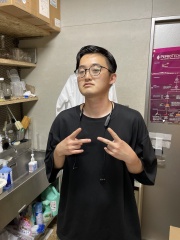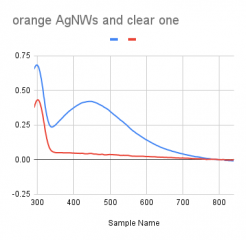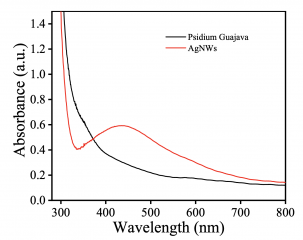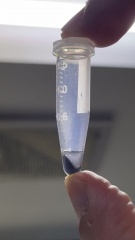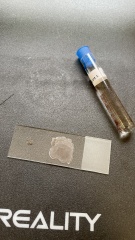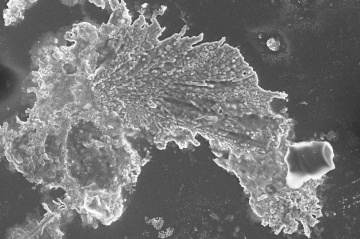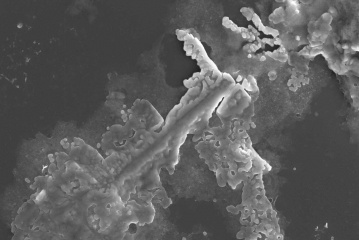Guava seeds synthesized silver nanowires
Contents
Guava synthesis of the Ag-NW
This experiment synthesis Ag-NWs with Psidium Guajava seed, Guava seeds contain some compounds, such as polyphenols and alkaloids, which might reduce silver nitrate to silver and synthesis the particle to wire-alike or "flakes" shapes under certain conditions. These compounds acted as reducing agents and stabilizers during the preparation process, thus enabling a green synthesis method without external stabilizers. However although we did repeated the experiment introduced in the paper and have obtained the orange solution, the dried solution didn't show the conductivity, and the SEM result doesn't show the existence of nanowires. This maybe due to the absence of PVP the caping agent and insufficient UV exposure during the synthesis process.
Experiments
The experiment process is introduced below in the gallery. The process aims to repeat the result introduced in the paper "UV-Light Mediated Biosynthesis of Silver Nanowires; Characterization, Dye Degradation Potential and Kinetic Studies". The first attempt was made in BioClub Tokyo. Additionally, 3 groups of mixtures with different concentration of guava seed extraction was prepared: 1. silver nitrate solution mixed with distilled water, 2. silver nitrate solution mixed with guava seed extraction heat stirred for 50 mins, 3. silver nitrate solution mixed with guava seed extraction heat stirred for 4 hours. All beakers are put under UV exposure for 4 hours, the color of the second and 3rd mixture were changed from milky white to orange. The orange solution and the aggregations were collected separately, but only the solution was examined by the UV-vis spectrum in Tokyo.
- step by step process
The UV-vis spectrum comparism
The result of UV-Vis spectrum data can be downloaded here.
- UV-vis spectrum result
SEM photography
Two samples were prepared, the first one is the final solution drop dried on glass, the second is the aggregations collected from the centrifuged final solution. There's no sign shows the existence of the wire-alike shape, indicating the failure of the nano wire synthesis with guava seeds extraction. Only "flake-alike" shape was found in the sample.
- SEM result
Preferences
- Ali, Faisal, Zahid Ali, Umer Younas, Awais Ahmad, Ghulam Mooin Ud Din, Muhammad Pervaiz, Rafael Luque, et al. 2021. “UV-Light Mediated Biosynthesis of Silver Nanowires; Characterization, Dye Degradation Potential and Kinetic Studies.” Sustainability 13 (November): 13220. https://doi.org/10.3390/su132313220.
- Lv, Pengfei, Huimin Zhou, Min Zhao, Dawei Li, Keyu Lu, Di Wang, Jieyu Huang, Yibing Cai, Lucian Amerigo Lucia, and Qufu Wei. 2018. “Highly Flexible, Transparent, and Conductive Silver Nanowire-Attached Bacterial Cellulose Conductors.” Cellulose 25 (6): 3189–96. https://doi.org/10.1007/s10570-018-1773-8.
- Ferraro, Giovanni, and Emiliano Fratini. 2019. “A Simple Synthetic Approach To Prepare Silver Elongated Nanostructures: From Nanorods to Nanowires.” Journal of Chemical Education 96 (3): 553–57. https://doi.org/10.1021/acs.jchemed.8b00628.
- Padhi, Santwana, and Anindita Behera. 2022. “Chapter 17 - Biosynthesis of Silver Nanoparticles: Synthesis, Mechanism, and Characterization.” In Agri-Waste and Microbes for Production of Sustainable Nanomaterials, edited by Kamel A. Abd-Elsalam, Rajiv Periakaruppan, and S. Rajeshkumar, 397–440. Nanobiotechnology for Plant Protection. Elsevier. https://doi.org/10.1016/B978-0-12-823575-1.00008-1.
- Lee, Dong Jun, Youngsu Oh, Jae-Min Hong, Young Wook Park, and Byeong-Kwon Ju. 2018. “Light Sintering of Ultra-Smooth and Robust Silver Nanowire Networks Embedded in Poly(Vinyl-Butyral) for Flexible OLED.” Scientific Reports 8 (1): 14170. https://doi.org/10.1038/s41598-018-32590-0.
- Jin, Hwa-Young, Jae-Yup Kim, Jin Ah Lee, Kwangsoo Lee, Kicheon Yoo, Doh-Kwon Lee, BongSoo Kim, et al. 2014. “Rapid Sintering of TiO2 Photoelectrodes Using Intense Pulsed White Light for Flexible Dye-Sensitized Solar Cells.” Applied Physics Letters 104 (14): 143902. https://doi.org/10.1063/1.4871370.
- Zhang, Pei, Ian Wyman, Jiwen Hu, Shudong Lin, Zhiwei Zhong, Yuanyuan Tu, Zhengzhu Huang, and Yanlong Wei. 2017. “Silver Nanowires: Synthesis Technologies, Growth Mechanism and Multifunctional Applications.” Materials Science and Engineering: B 223 (September): 1–23. https://doi.org/10.1016/j.mseb.2017.05.002.
